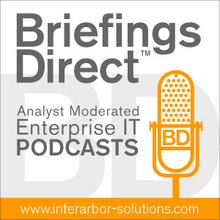When big data demand soars then MySQL can sour on making the transactions needed on time. Sharding the application and data resources has been about the only answer, other than to painfully and expensively cut and run to another data base like NoSQL.
This was the problem facing Massive Media when its social networking site Twoo rapidly grew to four million users in six months. By using the Clustrix distributed relational database system, Massive Media gained high scale-out transactional performance and automated fault tolerance, said Clustrix.
And that has now made Twoo the poster child for Clustrix, a San Francisco start-up funded by Sequoia and USVP and its co-founder, Paul Mikesell, also co-founded Isilon, which was sold to EMC for $2.25 billion.
Recognizing the huge uptake in MySQL -- while also understanding the database's limits -- promoted Clustrix to find a NewSQL alternative, first via a hardware appliance play, and now this week broadening to a software-only environment too that simulates the hardware components of the Clustrix database appliance.
On Tuesday, Clustrix announced the availability of the free Clustrix Development Kit, allowing users to try out the NewSQL system that it's backers say scales to an "unlimited number of users, transactions or data."
New class of database
Clustrix fits into the new class of hybrid SQL-NoSQL database solutions that combine the advantage of being compatible with many SQL applications and providing the scalability of NoSQL ones. Other such solutions include Database.com with ODBC/JDBC drivers, NuoDB, Xeround, and VoltDB, according to InfoQ.
"We are seeing increased interest in NewSQL database technologies that enable users to scale their databases without having to resort to complex manual sharding," said Matt Aslett, research manager, data management and analytics at 451 Research, in a release. "Clustrix's combination of an SSD-based appliance and MySQL compatibility is a compelling alternative for enterprises struggling to manage with sharding MySQL."
Clustrix uniquely offers a hardware solution that provides for linear scalability by simply adding hardware appliance nodes to the database cluster as demand mounts. The appliances sport a 4- or 8-cores processor, 24-48GB RAM, and 448-896GB SSD, and the entire cluster is seen and managed as one database, according to InfoQ. Pricing starts at about $100,000.
Eliminating the need for database sharding, which Clustrix CEO Robin Purohit calls "a toxic event," is huge because of the manual work required of developers (three times the code), the complexity due to not being able to do transactions across shards, and difficulty doing joins and innovations across the sharded data. You might recall that Purohit was an executive at HP Software before he joined Clustrix last October.
The value of the hybrid SQL-NoSQL database solutions reminds me of where server virtualization was a few years ago. A very good thing can quickly become a bad thing when sprawl and complexity undercut the benefits.
If Clustrix and its brethren can allow MySQL values to grow unencumbered via NewSQL then it will be of interest to more than start-ups. Enterprises building new applications for cloud, mobile, and high-transactions-intense big data uses may well be seduced to the NewSQL way as well. And there will be a lot of skilled developers and DBAs at their disposal who know MySQL well.
You may also be interested in:
- Open Group security gurus dissect the cloud: Higher or lower risk?
- EMC's Hadoop strategy cuts to the chase
- HP's Robin Purohit unpacks Business Service Management 9 as way to address complexity in hybrid data centers
- Big data consolidation race enters home stretch, as Teradata buys Aster Data
- PostgreSQL delivers alternative for MySQL users wary of Oracle's Sun acquisition
- IBM acquires Netezza as big data market continues to consolidate around appliances, middle market, new architecture
- Capgemini's CTO on Why Cloud Computing Exposes the Duality Between IT and Business
- MIT's Ross on how enterprise architecture and IT more than ever lead to business transformation


